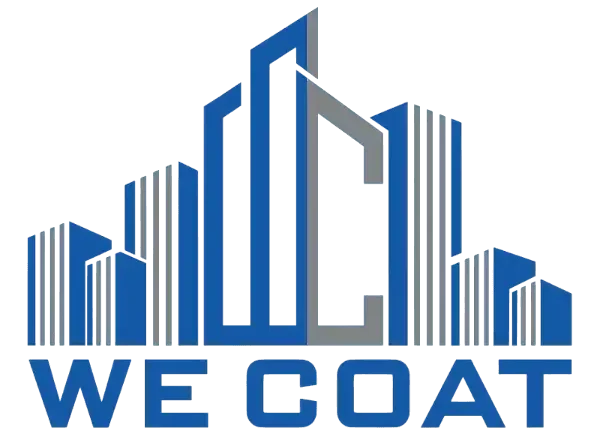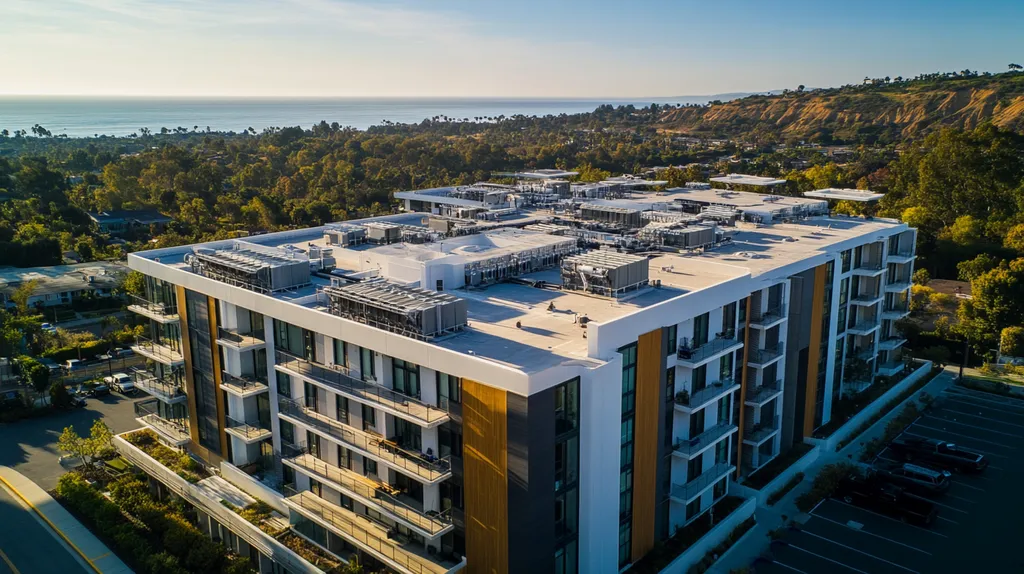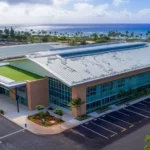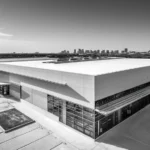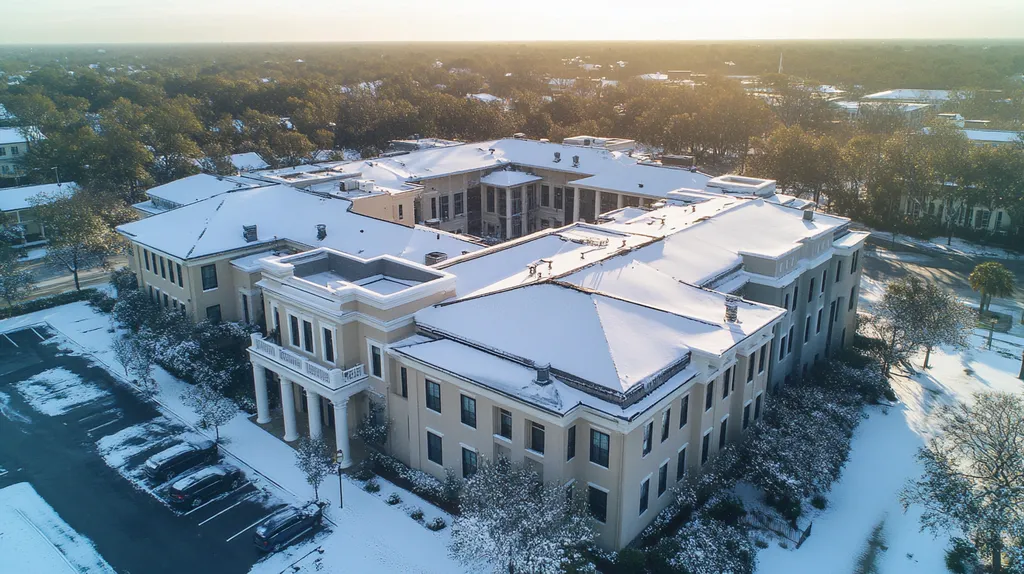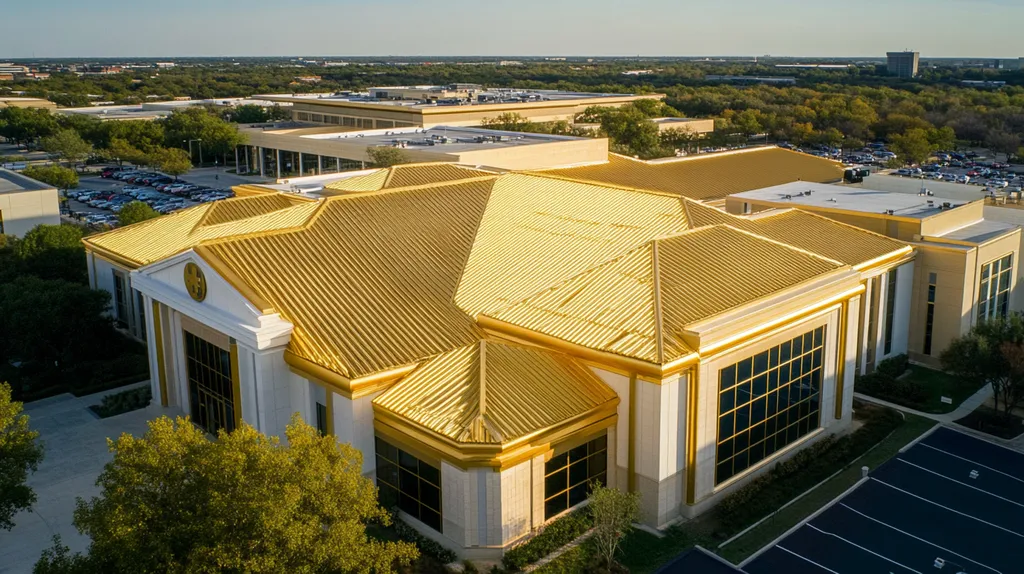Pest-related damage accounts for over $500 million in annual commercial roofing repairs, with infestations reducing roof lifespans by up to 30%. For property managers and building owners, preventing rooftop pest issues represents a critical maintenance challenge that directly impacts both structural integrity and tenant satisfaction.
From rodents that compromise insulation to birds that block drainage systems, understanding and addressing pest threats requires a systematic, proactive approach. This comprehensive guide examines proven strategies for educating tenants about pest prevention while protecting commercial roofing investments.
Through detailed exploration of fundamental concepts, system components, and implementation methods, facility managers will gain actionable insights for developing effective pest prevention programs that extend roof life and reduce maintenance costs.
SECTION 1: FUNDAMENTAL CONCEPTS
Rooftop pest infestations pose a critical challenge for commercial properties, with industry data showing that pest-related damage accounts for up to 15% of annual roof maintenance costs. Beyond the immediate structural concerns, these unwanted visitors can compromise building safety, tenant comfort, and overall property value. Understanding the core dynamics of pest behavior and prevention is essential for maintaining the integrity of commercial roofing systems and protecting your investment.
Common Pest Types and Behaviors
Birds, particularly pigeons and seagulls, represent one of the most visible rooftop threats. These pests create nesting areas around HVAC equipment and other rooftop installations, leading to blocked ventilation systems and deteriorating surfaces.
Rodents pose an equally serious concern, with their ability to chew through roofing materials and create entry points into the building. A single pair of rats can produce up to 15,000 offspring annually, making swift intervention crucial.
Insects like carpenter ants and termites often establish colonies in wooden roof components, particularly in areas where moisture has compromised the material. Their presence often indicates underlying water infiltration issues.
Understanding seasonal pest patterns is crucial – rodent activity typically increases during fall and winter, while insect infestations peak in warmer months. This knowledge enables targeted prevention strategies.
Entry Points and Vulnerabilities
Common access points include gaps around roof penetrations, damaged flashings, and deteriorated seals around mechanical equipment. Even openings as small as a quarter-inch can provide access for mice and smaller pests.
Vegetation touching or overhanging the roof creates natural bridges for pests. Regular trimming of trees and removal of organic debris should be part of standard maintenance protocols.
Poor drainage areas create standing water, attracting insects and providing conditions for moss and algae growth. These wet spots can soften roofing materials, making them more susceptible to pest damage.
Aging or improperly installed roofing components often develop gaps at seams and transitions, creating ideal entry points. Regular inspection of these vulnerable areas is essential for early detection.
Impact on Roof Integrity
Pest activity can rapidly accelerate roof deterioration. Bird droppings are highly acidic and can eat through protective coatings, while nesting materials can clog drainage systems and create dangerous water accumulation.
Rodent damage often extends beyond surface materials, affecting insulation and potentially creating fire hazards by damaging electrical systems. The cost of repairs can escalate quickly when internal components are compromised.
Insect infestations can remain undetected until significant structural damage occurs. Regular infrared scanning can help identify hidden pest activity within roofing systems.
The cumulative effect of pest damage can reduce a roof’s expected lifespan by 20-30%, making prevention and early intervention crucial for protecting your roofing investment.
SECTION 2: SYSTEM COMPONENTS
Understanding roofing system components is crucial for effective pest prevention, with industry data showing that inadequate component maintenance leads to 40% higher repair costs annually. From material selection to ventilation systems, each element plays a vital role in creating a pest-resistant barrier. Property managers who grasp these fundamentals can implement more effective prevention strategies while extending their roof’s operational lifespan.
Roofing Materials and Pest Resistance
Different roofing materials offer varying levels of pest resistance. Metal roofing systems provide superior protection against gnawing rodents, while modified bitumen’s seamless application minimizes potential entry points.
Material durability directly impacts pest prevention effectiveness. UV-resistant membranes maintain their integrity longer, preventing the development of cracks and gaps that pests exploit.
The interface between different roofing materials creates vulnerable transition points. Proper installation of these junctions, using compatible sealants and appropriate overlapping techniques, is essential for maintaining a pest-proof barrier.
Regular material assessment helps identify early signs of degradation. Addressing wear patterns promptly prevents the formation of pest-friendly environments and extends the life of pest-resistant features.
Ventilation and HVAC Considerations
Proper ventilation design significantly impacts pest prevention success. Well-planned air circulation reduces moisture accumulation that attracts insects and supports microbial growth.
HVAC components require specialized attention in pest management strategies. Screening vents and sealing duct connections prevents pests from accessing building interiors through mechanical systems.
Regular inspection with a flashlight helps identify priority areas where infestations exist or pest risk is high, enabling targeted prevention measures. (source: National Center for Healthy Housing)
Temperature control equipment creates condensation zones that attract pests. Installing proper drainage and maintaining clean surfaces around HVAC units reduces these attraction points.
Structural Weak Spots and Access Points
Roof penetrations represent primary pest entry opportunities. Proper flashing installation and regular maintenance of seals around pipes, vents, and equipment mounts is essential for preventing access.
Expansion joints and building movement accommodations require special attention. These necessary structural features must incorporate pest-resistant designs while maintaining their primary functions.
Edge details and termination points demand precise installation techniques. Proper fastening patterns and edge metal selection help maintain barrier integrity against pest intrusion.
Loading and stress points need regular monitoring. Areas subject to heavy traffic or equipment weight can develop gaps and separations that create new pest entry opportunities.
SECTION 3: IMPLEMENTATION METHODS
Effective rooftop pest prevention requires a systematic, multi-layered approach that combines physical barriers, monitoring systems, and professional expertise. Statistics show that properties implementing comprehensive pest prevention programs reduce annual maintenance costs by up to 40% while extending roof lifespans. Understanding and executing proven implementation methods allows facility managers to protect their roofing investment while ensuring tenant safety and satisfaction.
Preventive Measures and Sealing Techniques
Physical barriers serve as the foundation of effective pest prevention. Strategic installation of netting, copper tape, and other deterrent materials creates multiple layers of protection against common rooftop pests. (source: Ecorelation)
Properly sealed roof penetrations represent critical control points. Using industrial-grade sealants and maintaining tight flashing assemblies prevents pest infiltration while protecting underlying roofing components.
Regular inspection protocols should focus on typical entry points around mechanical equipment, expansion joints, and transition areas. Documenting and addressing vulnerabilities during scheduled maintenance prevents minor gaps from becoming major access points.
Surface preparation and material compatibility play vital roles in sealing effectiveness. Using proper primers and allowing adequate cure times ensures long-term adhesion and pest resistance.
Integrated Pest Management (IPM) Approaches
IPM strategies combine prevention, monitoring, and targeted intervention to create sustainable pest control. This systematic approach reduces chemical usage while maintaining effective pest prevention through multiple control methods.
Environmental modifications form a key IPM component. Proper drainage, debris removal, and elimination of standing water reduce conditions that attract and sustain pest populations.
Strategic placement of monitoring devices enables early detection of pest activity. Regular inspection of these devices helps facility managers identify emerging issues before they become widespread problems.
Documentation and trending of pest activity patterns support data-driven decision making. This information allows facility teams to adjust prevention strategies based on seasonal changes and specific pest pressures.
Collaboration with Pest Control Professionals
Professional pest control partnerships provide essential expertise and resources. Regular consultations help identify emerging threats and evaluate prevention program effectiveness.
Certified technicians bring specialized knowledge of pest behavior and control methods. Their expertise ensures appropriate application of treatments while minimizing impact on roofing materials and building occupants.
Coordination between pest control and maintenance teams maximizes prevention effectiveness. Clear communication channels and defined responsibilities ensure swift response to identified issues.
Professional documentation and reporting support regulatory compliance and risk management. Detailed service records demonstrate due diligence in protecting property and occupant interests.
SECTION 4: MAINTENANCE REQUIREMENTS
Industry data reveals that 85% of preventable rooftop pest infestations stem from inadequate maintenance protocols. Beyond the immediate structural threats, deferred maintenance creates compound issues that can reduce roof lifespans by up to 40% while dramatically increasing repair costs. Understanding and implementing proper maintenance requirements transforms reactive pest control into proactive prevention, protecting both property value and tenant satisfaction.
Regular Roof Inspections and Monitoring
Comprehensive roof inspections require systematic evaluation of all potential pest entry points and harborage areas. Monthly visual assessments should focus on drainage systems, mechanical penetrations, and areas where different roofing materials interface.
Physical inspection tools, including moisture meters and infrared cameras, help identify concealed pest activity within roofing assemblies. These technologies detect hidden moisture accumulation that often precedes pest infestations.
Documentation through detailed inspection reports and photographic evidence creates actionable maintenance records. This data enables tracking of developing issues and validation of prevention strategies.
Installing monitoring stations at strategic locations provides early warning of increasing pest activity. Regular checking of these stations helps quantify pest presence and guides intervention timing.
Maintenance Plans and Scheduling
Effective maintenance planning requires clear delineation of daily, monthly, and seasonal tasks. Daily tasks focus on debris removal and drainage inspection, while monthly activities include detailed component evaluation and preventive treatments.
Seasonal maintenance scheduling must account for both pest behavior patterns and weather conditions. Spring and fall represent critical inspection periods when pest activity typically increases.
Integration of pest prevention into standard maintenance procedures enhances overall effectiveness. Training maintenance staff to recognize pest indicators during routine tasks multiplies monitoring capabilities.
Digital maintenance tracking systems help ensure consistent execution of scheduled tasks. These platforms generate automatic notifications and maintain detailed service records.
Addressing Early Signs of Infestation
Swift response to early pest indicators prevents minor issues from escalating into major infestations. Proper identification of pest species through droppings, nesting materials, or damage patterns guides effective intervention strategies. (source: Buildings)
Creating clear communication protocols ensures rapid reporting of pest sightings. Establishing direct links between maintenance staff, pest control professionals, and property management streamlines response times.
Temporary sealing measures protect vulnerable areas while permanent solutions are implemented. Using appropriate materials prevents additional pest access during treatment phases.
Regular evaluation of intervention effectiveness guides strategy refinement. Tracking treatment outcomes helps identify successful approaches and necessary adjustments.
SECTION 5: PERFORMANCE METRICS
Tracking and measuring rooftop pest prevention efforts represents a critical yet often overlooked aspect of facility management. Recent industry data shows that buildings with documented performance metrics reduce pest-related repair costs by up to 65% compared to those without formal monitoring systems. Understanding and implementing these metrics transforms reactive pest control into strategic prevention, protecting both property value and occupant health while extending roof system longevity.
Identifying Signs of Pest Infestation
Physical barriers and strategic monitoring points form the foundation of early detection systems. Installing protective measures like netting and copper tape around vulnerable areas prevents common pests while creating measurable control zones. (source: Ecorelation)
Key inspection points include penetrations, drainage systems, and areas where different roofing materials meet. These zones require monthly documentation of conditions, with particular attention to new gaps, material deterioration, or pest evidence.
Surface indicators such as droppings, nesting materials, and unusual wear patterns provide quantifiable evidence of pest activity. Establishing baseline measurements for these indicators enables tracking of prevention effectiveness.
Digital documentation through photos and detailed reports creates trackable metrics for pest activity trends. This data supports informed decision-making about intervention timing and method selection.
Assessing Damage and Health Hazards
Structural impact assessment requires systematic evaluation of both visible and hidden damage. Regular moisture readings and infrared scanning help quantify the extent of pest-related deterioration within roofing assemblies.
Health risk metrics focus on air quality measurements and contamination levels near ventilation systems. These readings provide concrete data about the impact of pest activity on building occupant safety.
Cost tracking of both preventive measures and repair requirements enables ROI calculation for pest control efforts. This financial data helps justify comprehensive prevention programs while identifying cost-effective intervention methods.
Documentation of compliance with health codes and safety regulations provides essential performance benchmarks. These records demonstrate due diligence while supporting insurance claims and warranty coverage.
Evaluating Effectiveness of Control Measures
Success metrics for pest prevention programs should include both leading and lagging indicators. Monitoring device activation rates, pest sighting reports, and prevention maintenance costs provide comprehensive performance data.
Comparison of pre- and post-intervention measurements validates control measure effectiveness. This analysis helps refine prevention strategies while identifying the most successful approaches for specific pest challenges.
Tenant satisfaction surveys regarding pest control efforts offer valuable feedback about program impact. These perspectives help balance technical metrics with practical outcomes that affect building occupants.
Regular review of performance data enables continuous improvement of prevention strategies. Tracking seasonal variations and long-term trends supports proactive adjustments to maintain effective pest control.
SECTION 6: OPTIMIZATION STRATEGIES
Optimizing rooftop pest prevention represents a critical challenge for commercial properties, with industry statistics showing that unaddressed infestations can reduce property values by up to 25%. Beyond immediate structural threats, ineffective pest management creates cascading issues affecting tenant satisfaction, regulatory compliance, and operational costs. Strategic optimization transforms reactive pest control into proactive asset protection, delivering measurable returns through reduced maintenance costs and extended roof lifespans.
Customized Solutions for Unique Buildings
Building-specific pest prevention strategies must account for architectural features, usage patterns, and environmental factors. Physical barriers, monitoring systems, and treatment protocols require careful calibration to address unique structural vulnerabilities and pest pressures.
Mechanical systems and rooftop installations create complex pest prevention challenges. Detailed mapping of equipment locations, access points, and maintenance requirements enables targeted protection measures that maintain operational efficiency.
Combining preventive methods like netting, copper tape, and organic treatments creates comprehensive protection tailored to specific building needs. Regular monitoring and pest identification techniques ensure early detection while enabling swift response to emerging threats. (source: Ecorelation)
Climate considerations significantly impact pest behavior patterns. Customized solutions must incorporate seasonal variations, local wildlife populations, and weather-related challenges specific to each property’s location.
Compliance with Regulations and Standards
Regulatory requirements for pest control vary by jurisdiction and building type. Maintaining detailed documentation of prevention measures, inspections, and interventions demonstrates compliance while supporting insurance claims and warranty coverage.
Health department standards often mandate specific pest prevention protocols near ventilation systems and food service areas. Integration of these requirements into regular maintenance procedures ensures consistent compliance while protecting tenant operations.
Environmental regulations increasingly restrict chemical pest control methods. Adoption of eco-friendly prevention strategies aligns with current standards while positioning properties for future regulatory changes.
Industry certifications provide framework guidelines for pest prevention best practices. Regular audits and updates ensure prevention programs maintain alignment with evolving standards.
Cost-Effective Preventative Maintenance Practices
Strategic scheduling of prevention activities maximizes resource utilization while minimizing disruption to building operations. Coordinating pest control measures with routine maintenance reduces overall labor costs while improving detection capabilities.
Investment in durable prevention materials and proper installation techniques generates long-term savings. Quality barriers and monitoring systems deliver superior protection while requiring less frequent replacement.
Regular cleaning and debris removal deny pests essential resources while protecting roof components. These basic maintenance practices represent cost-effective first-line defense against infestations.
Data-driven decision making enables targeted allocation of pest prevention resources. Tracking intervention outcomes and maintenance costs supports continuous optimization of prevention strategies.
The Bottom Line
With pest-related damage costing commercial properties over $500 million annually in roof repairs, implementing comprehensive prevention strategies has become a critical facilities management priority.
Modern roofing systems face unprecedented pest pressures, from rodents compromising insulation to birds blocking essential drainage components. Without systematic prevention programs, these threats can reduce roof lifespans by up to 30% while creating significant health and safety risks.
By adopting data-driven monitoring protocols, leveraging professional expertise, and maintaining vigilant inspection schedules, property managers can transform vulnerable rooftops into resilient barriers against pest infiltration.
The future of commercial roofing depends on proactive prevention – protecting not just physical assets, but also tenant satisfaction, regulatory compliance, and long-term property values.
FREQUENTLY ASKED QUESTIONS
Q. What are the common pests affecting commercial roofs?
A. Common pests include birds, rodents, and insects like ants and termites. Each of these can cause significant damage, such as blocked ventilation or structural issues. Understanding their behaviors helps in devising effective prevention strategies.
Q. How does an industrial roof’s material impact pest resistance?
A. Different materials offer different levels of pest resistance. For example, metal roofing is less susceptible to rodents, while seamless membranes help prevent entry points. Choosing durable materials is crucial for effective pest management.
Q. What are effective methods for pest prevention on a commercial roof?
A. A combination of physical barriers, regular inspections, and monitoring systems is essential. Implementing preventive measures like netting and sealants, alongside ongoing surveillance, helps maintain a pest-free environment on rooftops.
Q. How often should commercial roofs be inspected for pests?
A. Regular inspections should occur monthly, especially focusing on high-risk areas like drainage systems. Seasonal changes also warrant thorough inspections to catch potential pest issues before they escalate.
Q. How can I track pest prevention effectiveness on my roof?
A. Tracking effectiveness involves documenting pest activity through inspections and maintenance reports. Keeping records of sightings, damage, and maintenance actions helps evaluate the success of your pest prevention strategies over time.
Q. What role do pest control professionals play in managing commercial roofs?
A. Pest control professionals provide expertise in identifying threats and implementing effective strategies. Their intervention can significantly enhance pest management programs while ensuring compliance with regulations and safety standards.
Q. What are the best practices for maintaining a pest-resistant industrial roof?
A. Best practices include regular inspections, maintaining clear drainage, and promptly addressing any wear in materials. Proper vegetation management and sealing entry points also play a crucial role in preventing infestations.
